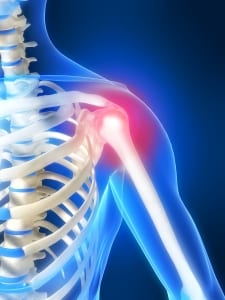 Leading Orthopedic surgeon at Herzliya Medical Center in Israel provides treatment for the replacement of the shoulder joint. Innovative diagnostic methods and treatments for diseases of major joints include the treatment of injuries resulting from industrial, household, and sports injuries. Orthopedic specialists here at HMC private clinic have extensive experience to allow patients to gain full rehabilitation after shoulder joint prosthesis.
Leading Orthopedic surgeon at Herzliya Medical Center in Israel provides treatment for the replacement of the shoulder joint. Innovative diagnostic methods and treatments for diseases of major joints include the treatment of injuries resulting from industrial, household, and sports injuries. Orthopedic specialists here at HMC private clinic have extensive experience to allow patients to gain full rehabilitation after shoulder joint prosthesis.
Shoulder Joint Replacement at HMC
- Our Specialists have mastered the most unique and modern orthopedic practices that minimize time spent in the hospital for the procedure, as well as effectively prevent future complications
- Complex rehabilitation therapy helps patients quickly resume function of the shoulder joint and achieve full range of motion and alleviation from pain
- Doctors take an Individual approach with a caring attitude in a comfortable setting to provide great service
Signs and Symptoms of Shoulder Joint Injuries
The shoulder joint is made up of three bones – the humerus, clavicle, and scapula. The humerus makes up a portion of the glenoid cavity, which is formed by the scapula. The clavicle, attached to the joint, supports strength and stability. Articular surfaces of the bones are covered with cartilage, providing smooth movement capability and reduced friction. The shoulder joint is reinforced by a strong collection of connective tissue and a muscular apparatus belting the upper extremities. Although the shoulder joint is not exposed to body weight, heavy lifting applies pressure on joints. Premature wear of the articular structures is observed among those who engage in heavy physical activity, as well as athletes. Damage to the shoulder joint can cause both aging and degenerative changes, as well as injury. Arthroplasty (joint replacement – usually with prosthesis) is suggested for the following cases:
- Osteoarthritis – the degenerative joint disease is often caused by age-related changes in joint health, but may occur in young patients suffering from metabolic disorders, as well as a result of prolonged overuse
- Complications associated with rheumatoid arthritis
- Complications from post-traumatic arthritis
- Damage to the ligamentous apparatus
- Avascular necrosis of the humeral head – developed as a result of circulatory disorders related to bone thrombosis, embolism, vasculopathy, fractures, and certain blood disorders
- Intra-articular fractures accompanied by irreversible damage to the bones of the head and articular surfaces
- Penetrating wounds in the joint
- Complications from previous surgical intervention on the shoulder joint (often of infectious origin)
Shoulder Pain Diagnosis
Joint experts at HMC in Israel diagnose injury to the shoulder joint using highly-precise methods and techniques, such as:
- X-ray – determine the health of articular surfaces and identify intra-articular fracture or dislocation
- Ultrasonography – used to diagnose fractures and ligament sprains. It is also used to assess the state of intra-articular structures of connective tissue. Excessive amounts of fluid in the joint cavity are diagnosed by the use of ultrasound and may be indicative of an active inflammation
- Magnetic resonance imaging (MRI) – allows for the most accurate visualization of structural abnormalities of the shoulder joint
When indicated, Orthopedic experts recommend supplementary laboratory tests, such as scintigraphy, endoscopic diagnostic puncture, and arthroscopy (a minimally invasive procedure to visualize and treat joints).
Shoulder Surgery at HMC
The Orthopedics Clinic at HMC in Israel offers several modern procedures for shoulder joint arthroplasty, among which are the following:
- Total Shoulder Replacement. Complete replacement of all the joint structures (humeral head and glenoid cavity). With the use of high-strength artificial implants, restoring joint function in cases of severe damage in conjunction with damage to joint’s articular surfaces and cartilage.
- Replacement of humeral head (Stemmed Hemiarthroplasty). In contrast, to complete replacement of the shoulder joint, this procedure only replaces the humeral head, while retaining structures of the glenoid cavity. This procedure is suggested for those with localized alteration of the humeral head, including due process caused by blood circulation disorders
- Replacement of articular surface of the humeral head (Resurfacing Hemiarthroplasty). When damage is localized on the articular surface of the humeral head, it is possible to preserve key anatomical structures through this procedure while maintaining the cartilage of the glenoid cavity.
- Reverse Total Shoulder Replacement (prosthesis). This procedure is performed in patients with severe structural abnormalities of the joints, affecting not only the joint surfaces but also affecting muscles and ligaments. This procedure reverses the joint’s ball and socket mechanisms, allowing the patient to regain full range of motion with shoulder deltoid muscle.
Shoulder joint replacement surgery in Israel at Herzliya Medical Center is performed after a thorough examination of patients and treatment recommendations are made based on age, degree of functional impairment, patient activity level, and individual preferences.
 Leading Orthopedic surgeon at Herzliya Medical Center in Israel provides treatment for the replacement of the shoulder joint. Innovative diagnostic methods and treatments for diseases of major joints include the treatment of injuries resulting from industrial, household, and sports injuries. Orthopedic specialists here at HMC private clinic have extensive experience to allow patients to gain full rehabilitation after shoulder joint prosthesis.
Leading Orthopedic surgeon at Herzliya Medical Center in Israel provides treatment for the replacement of the shoulder joint. Innovative diagnostic methods and treatments for diseases of major joints include the treatment of injuries resulting from industrial, household, and sports injuries. Orthopedic specialists here at HMC private clinic have extensive experience to allow patients to gain full rehabilitation after shoulder joint prosthesis.